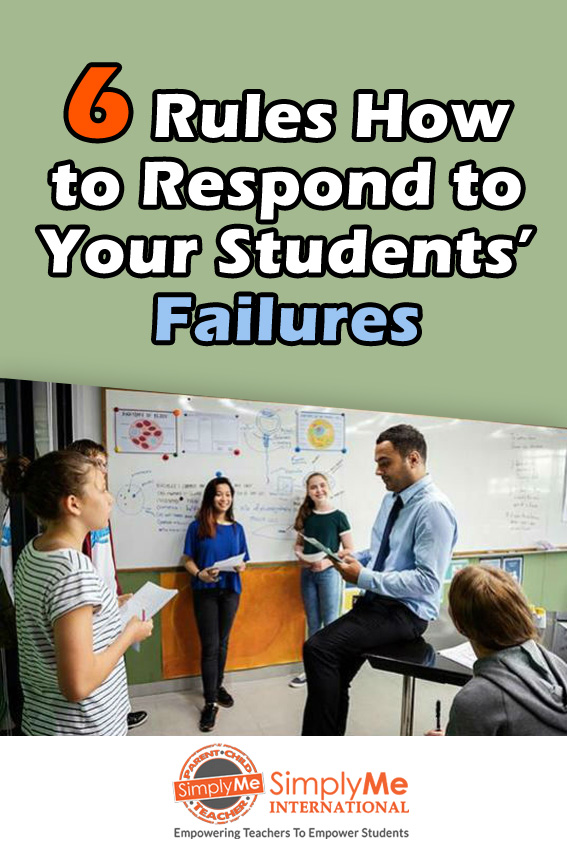6 Rules How to Respond to Your Students’ Failures

The following are 6 rules of thumb how we,
as teachers, parents and educators,
should respond to our students’/children's failures:
- Failure is the Path to Success
We should not treat failure as the end of the world, but as a challenge that our children/students must go through to succeed. - Failure as a Tool for Making Inferences and Drawing Conclusions
We should view failure as a learning experience which our students/children can learn from by understanding the mistakes they’ve made. - Do Not Ask "Why"
Why did this happen to my student/child?
Why do I deserve this?
Why? Why? Why?
Asking why leads to victimhood, blame and self-pity.
Instead we must ask constructive questions,
such as:
"How could I have solved the problem differently?"
and "What can I learn from it?" - Statistics, it's All About Statistics
Studies show that behind every success,
there are at least three to four significant failures.
The main difference between successful people
and those who did not succeed in fulfilling themselves,
is that the former did not give up after their first failure,
but advanced towards their dream without surrendering to
self-pity. - If We Always Do What We've Always Done,
We'll Always Get What We've Always Gotten
If your students/children keep failing,
help them look for a new and creative way to succeed
that is different from what they have tried so far! - If You Don't Try Anything You Can't Fail…
If our students/children never experience failure
they will never learn to cope with real life.
Failure may leave them with unpleasant feelings,
but it will ultimately strengthen them
and become the source of their self-esteem!
Taken from our accredited online course for teachers:
Intuition, Charisma and Body Talk.
For more details about our Online Graduate Continuing Education Courses for Teachers click here.




